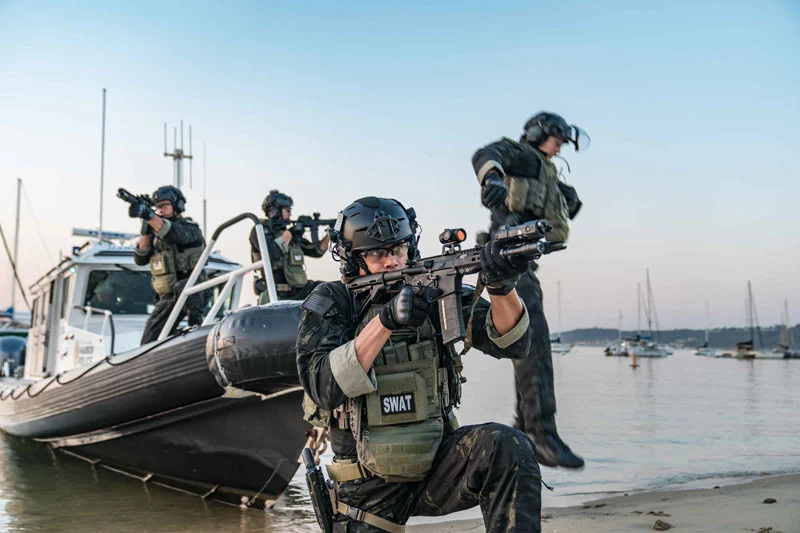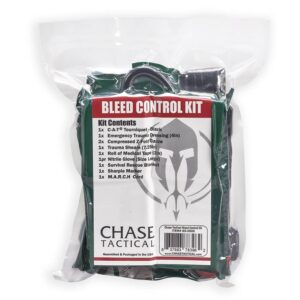Basic First Aid Skills for Emergencies

Emergencies can happen at any time, often without warning. Knowing how to respond can make a big difference at home, work, or in public. Basic first aid skills are important for everyone, not just healthcare professionals. These skills help you take quick action, which can save lives before professional help arrives.
Be mission-ready—shop premium tactical medical gear now at Chase Tactical.
Why First Aid Knowledge Matters
Imagine witnessing a car accident or finding a coworker unconscious—what would you do? Emergency services may take minutes (or longer) to arrive in critical moments. That gap can be crucial. First aid empowers ordinary individuals to:
- Sve life
- Prevent the situation from worsening
- Promote recovery
You don’t need a medical degree—just calm thinking, quick action, and the right knowledge.
The Best 10 First Aid Skills Everyone Should Know

Learning key first-aid skills means being ready to respond to various emergencies. The right action can make a lifesaving difference, whether a burn, a broken bone, or something more serious like a heart attack. Here are the 10 most essential survival skills that everyone should master.
1. Cardiopulmonary Resuscitation (CPR)
CPR is one of the most important first aid techniques. It’s used when someone’s heart stops (cardiac arrest) or isn’t breathing. Start by checking for responsiveness and normal breathing. If there’s none, call emergency services immediately.
Begin hands-on CPR by placing the heel of your hand in the center of the chest and pushing hard and fast, at a rate of 100-120 compressions per minute. Continue until help arrives or an AED (automated external defibrillator) is available. Use the AED as soon as possible, following its audio prompts.
2. Stopping Severe Bleeding
Uncontrolled bleeding can be life-threatening. To stop bleeding:
- Apply direct pressure with a neat and clean cloth or sterile bandage.
- Keep applying pressure even if the cloth becomes soaked—don’t remove it.
- Elevate the injured area if it’s an arm or leg and doesn’t cause pain.
- If bleeding continues, and you’re trained, apply a tourniquet above the wound.
- Never remove foreign objects from a wound. Instead, bandage around the object.
The goal is to minimize blood loss until emergency personnel arrive.
3. Burn Management
Burns can range from minor to life-threatening. Here’s how to handle them:
- Minor burns: Run cool (not cold) water over the burn for 10–15 minutes. Do not use ice. After cooling, cover with a non-stick sterile bandage.
- What to avoid: Never apply butter, oils, toothpaste, or creams. They trap heat and can cause infection.
- Major burns: If the burn is deep, large, or on sensitive areas (face, hands, genitals), call emergency services. Do not remove the bandage or clothing stuck to the skin.
Keep the person warm and calm while waiting for help.
4. Choking Relief (Heimlich Maneuver)
Choking blocks the airway, cutting off oxygen. Signs include the person’s inability to speak, breathe, or cough.
- For adults and children over 1 year: Stand behind the person, place your arms around their waist, and perform abdominal thrusts (Heimlich maneuver). Use quick, upward thrusts to try to expel the object.
- For infants under 1 year: Lay the baby face-down along your forearm and give five back slaps between the shoulder blades. Then, turn them over and give five chest thrusts using two fingers.
Repeat it until the object is dislodged or emergency responders take over.
5. Treating Fractures and Sprains
Suspected fractures or sprains should be handled with care:
- Immobilize the injured limb using a splint or any firm object (like a rolled-up newspaper).
- Apply ice to reduce swelling, but not directly on the skin—use a cloth or towel barrier.
- Elevate the limb if possible, and if it doesn’t cause more pain.
- Do not attempt to realign bones or push protruding bones back in.
Keep the person still and seek professional medical care.
6. Recognizing a Stroke (FAST)
Early intervention during a stroke can drastically reduce long-term damage. Learn the FAST acronym:
- Face drooping – Check for face drooping by asking the person to smile.
- Arm weakness – See if they can raise both arms or if one arm drifts down.
- Speech difficulty – Are they slurring words or hard to understand?
- Time to call emergency services – Every second counts.
Stay with the person and keep them calm while you wait for help.
7. Responding to Heart Attacks
Heart attacks can vary in symptoms, but look out for:
- Chest pain or tightness
- Pain spreading to the arm, neck, jaw, or back
- Nausea, dizziness, cold sweat
- Shortness of breath
Call emergency services right away. Help the person sit comfortably, loosen tight clothing, and reassure them. If not allergic, low-dose aspirin can help thin the blood, but only if advised by emergency services.
8. Seizure Safety
When someone has a seizure, you must protect, not restrain them.
- Move objects away to prevent injury.
- Cushion their head with something soft.
- Do not try to hold them down or put anything in their mouth.
- Once the seizure ends, turn them onto their side to help breathing.
Call emergency services if a seizure lasts more than five minutes, if another seizure starts soon after, or if it is their first seizure.
9. Managing Shock
Shock is a life-threatening situation where the body isn’t getting enough blood flow. Causes include trauma, blood loss, severe burns, or allergic reactions.
Signs of shock include:
- Pale, cool, clammy skin
- Rapid breathing or heartbeat
- Confusion or weakness
What to do:
- Lay the person flat on their back.
- Elevate their legs (unless there’s a head, neck, or back injury).
- Keep them warm and comfortable.
- Do not give them food or water.
- Stay with them and monitor their breathing.
10. Treating Nosebleeds
Though common, nosebleeds can be alarming. Here’s what to do:
- Have the person sit up straight and lean a little forward.
- Pinch the soft part of their nose and hold it for 10 minutes without letting go.
- Encourage slow, steady breathing through the mouth.
- If bleeding hasn’t stopped after 20 minutes, seek medical help.
Avoid blowing the nose for several hours afterward.
Conclusion
Learning basic first aid skills isn’t just about ticking a box—it’s about being prepared to help in the moments that matter most. From CPR to managing burns or fractures, these skills can empower you to take life-saving action when needed. You don’t need to be a healthcare provider to make a difference—just a person willing to act.
Consider taking a certified first aid training course to deepen your knowledge and practice your skills. Emergencies are unpredictable, but with preparation, you can respond with confidence and compassion.
Frequently Asked Questions
How long does it take to learn basic first aid?
Most basic first aid training courses can be completed in a single day or weekend, making it accessible even for those with busy schedules.
Is first aid training suitable for kids or teens?
Yes, many programs offer age-appropriate training, which is a great way to instill confidence and responsibility early.
What should I keep in a home first aid kit?
A well-stocked chase tactical medical kit. Your kit should include bandages, antiseptic wipes, adhesive tape, gloves, scissors, a thermometer, and personal medications.

